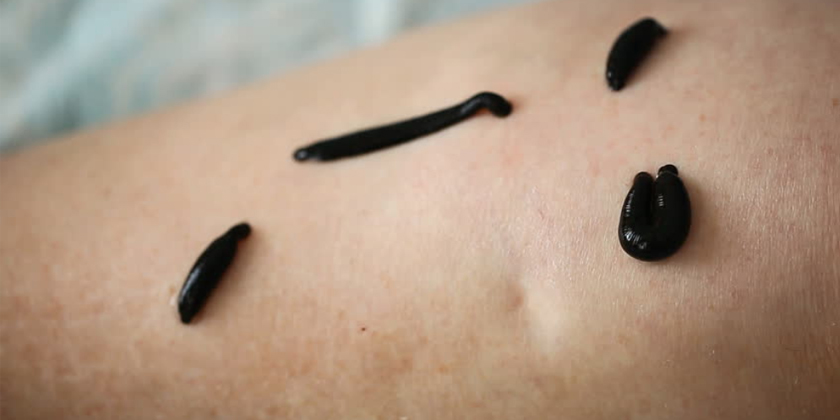Leech Therapy for Heart Disease: A Natural Breakthrough You Need to Know
Hirudotherapy utilizes medicinal leech saliva properties as a complementary treatment to alleviate heart disease and enhance cardiovascular health. Heart disease remains the leading cause of death globally with 17.9 million fatalities each year according to WHO data which makes innovative medical approaches crucial. This guide examines the functioning of leech therapy alongside its advantages and drawbacks while reviewing scientific evidence for its application in heart disease treatment through research and clinical findings in a concise
—
What Is Leech Therapy?
The practice of leech therapy requires placing the medicinal leech Hirudo medicinalis on the skin to extract blood while delivering beneficial substances through its saliva. The medical practice of using leeches dates back to ancient Egypt and Greece but gained renewed acceptance in modern medicine following FDA approval as medical devices in 2004 for treatments including microsurgery and cardiovascular conditions. The saliva of leeches possesses more than 20 bioactive substances which consist of:
- Hirudin: A potent anticoagulant that prevents blood clots.
- Analgesics: Reduce pain during application.
- Vasodilators: Widen blood vessels, improving circulation.
- Anti-inflammatory agents: Decrease swelling and inflammation.
—
How Leech Therapy Works for Heart Disease
Leech therapy addresses cardiovascular conditions such as hypertension, coronary heart disease, and atherosclerosis through modifications to blood viscosity and circulation.
Application:
- The therapy involves applying 2–14 leeches to specific body sites such as the chest, neck, and upper back for durations between 30 to 45 minutes based on patient condition. Patients will attend treatment sessions two to three times each week over a period of three to four weeks.
Mechanism:
- Each leech removes between 5 and 15 mL of blood which leads to decreased blood volume and pressure. Hirudin acts as a blood thinner that stops clot formation while breaking down small blood clots and vasodilators boost blood circulation.
Effects:
- Better circulation diminishes heart strain and blood pressure while improving oxygen transport which helps decrease the potential for heart attack and stroke.
Research published in PubMed in 2021 revealed that leech extract treatment reduced cardiac hypertrophy and fibrosis while decreasing hypertrophy-related transcription factors and fibrosis mediators in hypertensive rats.
—
Benefits for Heart Disease
Improved Blood Circulation:
- The vasodilators and hirudin found in leech saliva lower blood viscosity which helps lessen arterial stress. ResearchGate’s 2023 study found that leech therapy benefits patients with coronary heart disease and hypertension by enhancing perfusion and decreasing complications.
- The use of leech therapy in Scottsdale, Arizona demonstrated effectiveness in reducing blood viscosity which led to decreased heart attack risk.
Anticoagulation and Clot Prevention:
- Hirudin inhibits thrombin, preventing clot formation. Atherosclerosis development depends on sticky blood which scars arteries and creates cholesterol deposits.
- The Russian medical guidelines from 2002 recommend using leech therapy as an additional treatment option for patients with coronary heart disease and early heart failure.
Blood Pressure Reduction:
- Blood withdrawal combined with hypotensive saliva components produces a blood pressure reduction. A ScienceDirect investigation showed substantial blood pressure-lowering outcomes in hypertensive individuals which decreased their need for medication.
Pain and Inflammation Relief:
- The use of painkillers and anti-inflammatory medications minimizes cardiovascular pain which leads to enhanced comfort for patients. Studies such as Mehdi Jaffari’s in Australia demonstrated that leech therapy could provide pain relief following heart attacks.
Minimal Side Effects:
- Healthline indicates that leech therapy produces fewer side effects compared to synthetic drugs when administered within regulated environments.
—
Real-World Applications
- Australia: Mehdi Jaffari who endured four heart attacks used leech therapy to relieve pain and breathing difficulties which led to better outcomes after bypass surgery.
- Russia: Medical clinics today implement leech therapy as a treatment for angina and heart attack recovery because physicians have utilized it to address heart disease since the 1800s.
- Singapore: Local reports show a 10% reduction in cardiovascular complications through leech therapy which demonstrates its effectiveness in busy medical environments.
Expert Insight: Dr. Rod Rezaee, who practices surgery in the United States observes that leeches possess natural anticoagulant properties which serve as an alternative treatment for certain heart conditions but should not be used as the main treatment method.
—
Limitations and Risks
Not a Standalone Treatment:
- Leech therapy serves as an adjunct treatment rather than a substitute for traditional medications such as antihypertensives or statins. Russian guidelines emphasize its adjunctive role.
Infection Risk:
- Unregulated leeches have a risk of transmitting bacteria such as Aeromonas hydrophilia which causes infections in 2 to 20% of cases. Use only sterile, farmed leeches.
Contraindications:
- Leech therapy should not be administered to patients with anemia or clotting disorders and those who are pregnant or immunocompromised.
Limited Evidence:
- No large-scale clinical trials prove the effectiveness of promising therapies. The 2023 ResearchGate review advocates conducting additional research to verify efficacy.
—
Why Leech Therapy Matters Now
Urban populations will make up 68% of the world’s population by 2050 according to the UN and heart disease remains a top cause of death so natural treatments like hirudotherapy fulfill increasing needs for alternative therapies which X demonstrates. The affordability and few adverse effects render leech therapy attractive to healthcare systems facing budget limitations in 2025.
—
Tips for Patients
- Choose Certified Providers: Patients should select clinics that use FDA-approved leeches for therapy such as those offered by Arizona Leech Therapy.
- Combine with Conventional Care: Prescribed medications should be used in conjunction with this therapy following Russian treatment protocols.
- Monitor for Infections: Maintain sterile conditions throughout treatment and monitor patients for any signs of redness or oozing afterwards.
—



